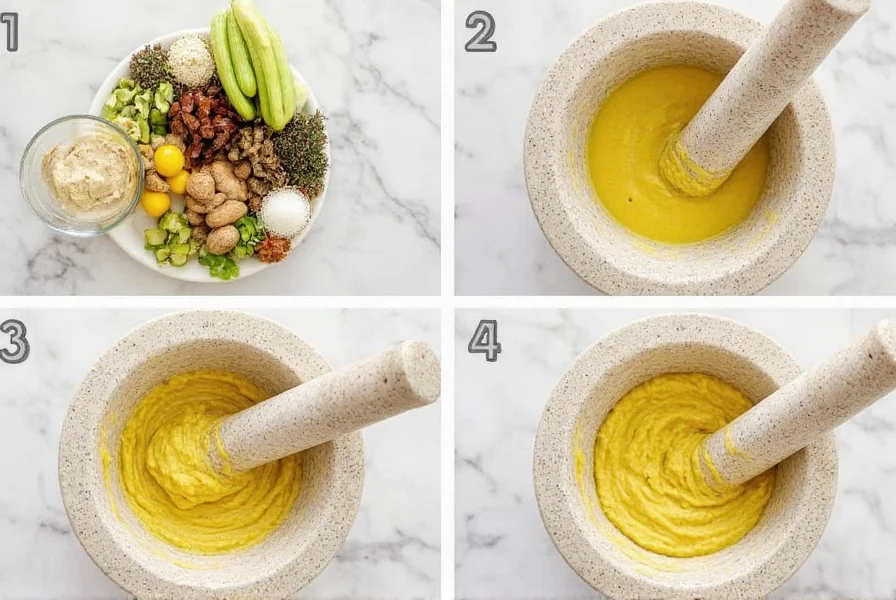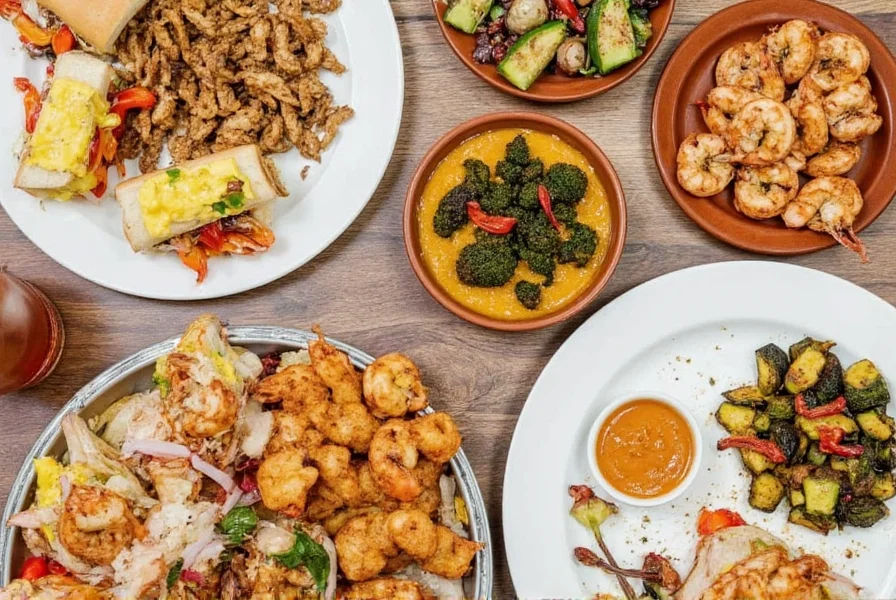Originating from Mediterranean cuisine, this versatile sauce combines the rich tradition of aioli—a garlic and olive oil emulsion—with the vibrant kick of peppers. Whether you're making it with roasted red peppers for sweetness or fresh jalapeños for heat, pepper aioli elevates simple dishes with minimal effort. The key to perfect pepper aioli lies in balancing the pungency of raw garlic with the sweetness of peppers while maintaining a smooth, creamy texture that clings to food without separating.
What Exactly Is Pepper Aioli?
While traditional aioli hails from regions like Catalonia and Provence as a simple emulsion of garlic and olive oil, pepper aioli represents a modern adaptation that incorporates various peppers for added complexity. This isn't merely "mayo with peppers"—authentic pepper aioli starts with a true garlic emulsion base, though many home cooks adapt the recipe using quality mayonnaise as a time-saving foundation.
The "pepper" component typically comes from one or more varieties:
- Roasted red bell peppers (for sweetness and vibrant color)
- Jalapeños (for moderate heat)
- Habaneros (for intense heat)
- Smoked peppers like chipotle (for depth and smokiness)
- Pepperoncini (for tangy mild heat)
| Pepper Type | Heat Level (Scoville) | Flavor Characteristics | Best Used For |
|---|---|---|---|
| Roasted Red Bell | 0 SHU | Sweet, earthy, slightly smoky | Family-friendly dishes, sandwiches |
| Jalapeño | 2,500-8,000 SHU | Grassy, bright heat | Tacos, burgers, Mexican-inspired dishes |
| Chipotle | 2,500-8,000 SHU | Smoky, earthy, medium heat | BBQ, grilled meats, southwestern cuisine |
| Habanero | 100,000-350,000 SHU | Tropical fruit notes, intense heat | Caribbean-inspired dishes, adventurous eaters |
Classic Pepper Aioli Recipe
Creating authentic pepper aioli requires attention to emulsion technique and ingredient quality. While many commercial versions use mayonnaise as a base, traditional preparation starts with raw garlic and olive oil. The following recipe provides both authentic and accessible approaches.

Traditional Method (Garlic-First Emulsion)
This method creates the most authentic flavor but requires patience and proper technique to maintain the emulsion.
| Ingredient | Amount | Preparation Notes |
|---|---|---|
| Large garlic cloves | 2-3 | Peel and smash to release oils |
| Fine sea salt | ½ tsp | Helps break down garlic structure |
| Lemon juice | 1 tbsp | Freshly squeezed for best flavor |
| Egg yolk (optional) | 1 | Helps stabilize emulsion |
| Extra virgin olive oil | ¾ cup | Pour slowly while whisking |
| Roasted red peppers | ¼ cup | Drained and patted dry |
| Freshly ground black pepper | To taste | Add after emulsion forms |
Step-by-Step Preparation
- Combine garlic and salt in a mortar, grinding to a smooth paste (about 3-5 minutes)
- Add lemon juice and optional egg yolk, continuing to grind
- Begin adding olive oil drop by drop while continuously grinding
- Once emulsion begins to form (after about 2 tbsp oil), add remaining oil in a thin, steady stream
- Blend in roasted peppers until smooth
- Season with black pepper and additional salt if needed
- Chill for at least 30 minutes before serving to allow flavors to meld
Common Pepper Aioli Mistakes to Avoid
Even experienced cooks encounter issues when making pepper aioli. Understanding these common pitfalls ensures perfect results every time:
- Adding oil too quickly: This breaks the emulsion. Always start drop by drop, then progress to a thin stream only after the mixture thickens
- Using cold ingredients: All components should be at room temperature for proper emulsification
- Over-processing peppers: Blending peppers too long can release bitter compounds from seeds and membranes
- Improper storage: Pepper aioli with raw garlic should be consumed within 3 days due to potential botulism risk
- Using low-quality olive oil: The oil's flavor dominates, so choose a mild, fruity extra virgin variety

Versatile Serving Suggestions
Pepper aioli's balanced heat and creaminess make it incredibly versatile across multiple cuisines. Consider these pairings to maximize your homemade sauce:
- Seafood enhancement: Elevates grilled shrimp, fish tacos, and crab cakes without overpowering delicate flavors
- Sandwich spread: Adds moisture and flavor to turkey, chicken, or vegetarian sandwiches
- Dipping sauce: Perfect for artichokes, roasted potatoes, or vegetable crudités
- Burger upgrade: Transforms ordinary burgers with a spicy, creamy element
- Salad dressing base: Thin with additional lemon juice for a creamy salad dressing
- Grain bowl accent: Drizzled over quinoa or rice bowls for added richness
Storage and Food Safety Considerations
Proper storage ensures both safety and quality for your homemade pepper aioli. Unlike commercial versions with preservatives, fresh preparations have limited shelf life:
- Store in an airtight container in the refrigerator
- Consume within 3-5 days for best quality and safety
- Always use clean utensils when serving to prevent contamination
- Discard if you notice any off smells, separation that doesn't reincorporate with stirring, or mold
- For longer storage (up to 2 weeks), consider adding an extra tablespoon of lemon juice or vinegar to increase acidity
Important food safety note: Raw garlic in oil mixtures can potentially support botulism growth if not properly handled. Always refrigerate pepper aioli containing raw garlic, and never store at room temperature for extended periods. For commercial-style shelf stability, recipes must include sufficient acid (pH below 4.6) and proper processing techniques beyond typical home preparation.
Flavor Variations to Explore
Once you've mastered the basic recipe, experiment with these creative variations that maintain the essential pepper aioli character while adding unique dimensions:
- Smoked Paprika Pepper Aioli: Add 1 tsp smoked paprika along with roasted red peppers for deep, barbecue-friendly flavor
- Lime-Cilantro Variation: Substitute lime juice for lemon and add 2 tbsp fresh cilantro for Mexican-inspired dishes
- Truffle Pepper Aioli: Incorporate ½ tsp truffle oil with jalapeño peppers for an upscale twist
- Harissa-Infused: Blend in 1-2 tbsp harissa paste for North African heat and complexity
- Roasted Garlic & Bell Pepper: Use roasted garlic instead of raw for milder, sweeter flavor that pairs well with roasted vegetables
Frequently Asked Questions
Can I make pepper aioli without raw garlic?
Yes, you can create a garlic-free version by substituting roasted garlic or garlic powder. For roasted garlic, use 4-5 cloves of roasted garlic instead of raw. If using garlic powder, start with ¼ teaspoon and adjust to taste. Note that the flavor profile will differ significantly from traditional aioli, which relies on raw garlic's pungency.
Why does my homemade pepper aioli separate?
Separation typically occurs when the emulsion breaks, usually due to adding oil too quickly or using ingredients at different temperatures. To fix a broken emulsion, start with a fresh egg yolk or tablespoon of water in a clean bowl, then slowly whisk in the broken mixture drop by drop. Prevention is key—always add oil gradually while maintaining consistent whisking motion, and ensure all ingredients are at room temperature before beginning.
What's the difference between pepper aioli and spicy mayo?
Traditional pepper aioli starts with a garlic and olive oil emulsion base, while spicy mayo begins with commercial mayonnaise. Authentic aioli has a brighter, more complex garlic flavor and uses higher-quality olive oil, whereas spicy mayo relies on the vinegar and egg base of commercial mayo. Pepper aioli typically contains fresh peppers blended into the emulsion, while spicy mayo often uses sriracha or other hot sauces. The texture also differs, with proper aioli being lighter and more delicate than the denser spicy mayo.
How can I adjust the heat level in pepper aioli?
Control heat by selecting appropriate peppers and preparation methods. For milder aioli, use bell peppers or remove seeds and membranes from hotter peppers. For increased heat, include pepper seeds and membranes or use hotter varieties like serrano or habanero. You can also control heat by adjusting the ratio—start with 1-2 teaspoons of minced pepper and gradually increase. Remember that heat intensifies slightly as the aioli chills, so taste after 30 minutes of resting before making final adjustments.











 浙公网安备
33010002000092号
浙公网安备
33010002000092号 浙B2-20120091-4
浙B2-20120091-4